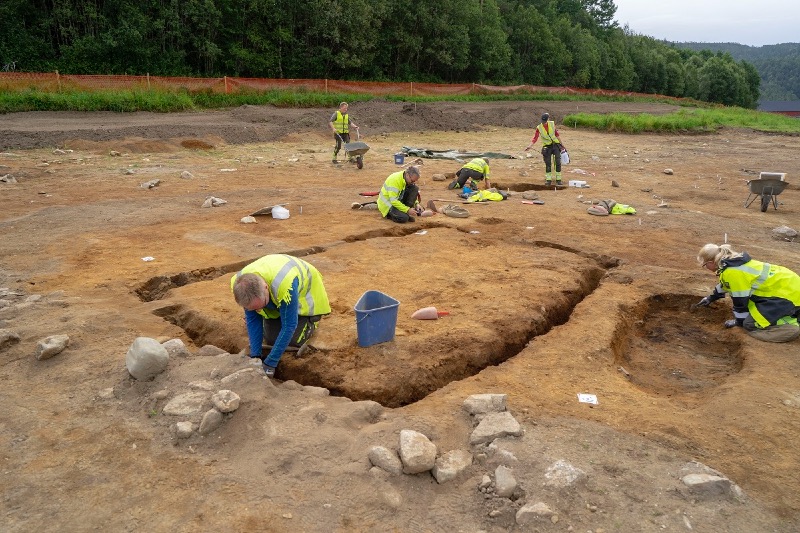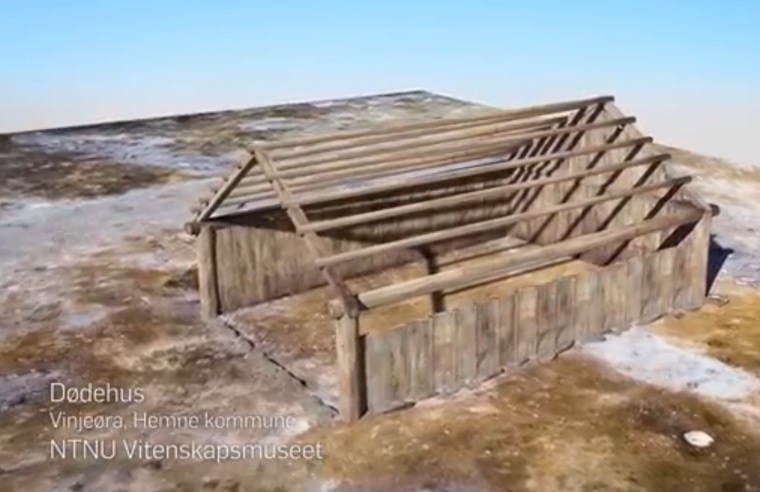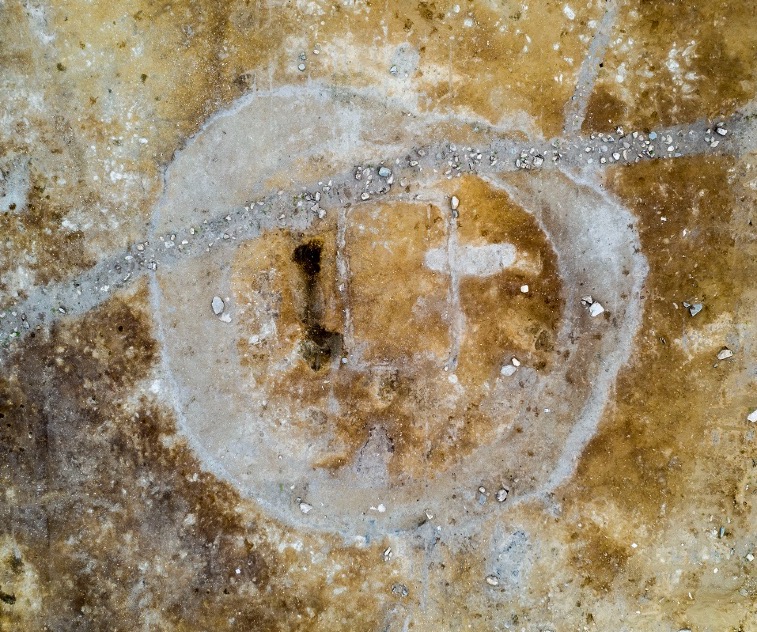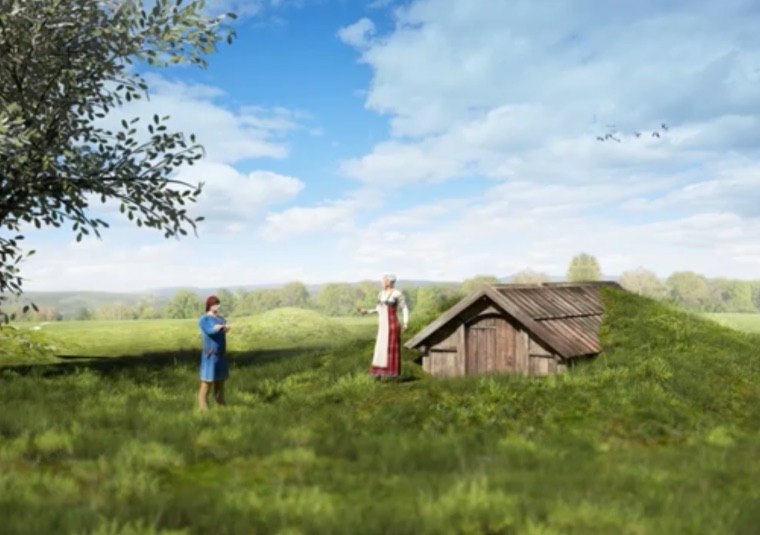
Archaeologists from NTNU Science Museum have uncovered what appears to be a small mausoleum, or burial house, in central Norway.
Lead archaeologist Raymond Sauvage called it “a very rare and interesting find.”
It is the latest in a series of finds in Norway. Recently a different team uncovered a bronze cauldron from the Roman Age in an excavation near Trondheim, also related to the construction of a new road.
A solid construction
The building style is typical of the viking age but also bears similarities to the oldest stave churches.

Archaeologists say the building was five meters long by three meters wide. The construction appeared to be solid, with wooden staves as corners and standing wooden planks as walls.
Read more: Viking funerals & burial rituals
However, the only thing left now is a rectangular ditch with the prints of the house and some supporting stones where the walls once stood. “We believe there was a tomb in the house, because we see that the house was in the middle of a large mound,” explained Sauvage.
Excavating a Viking farm
The excavation of the known site of a Viking Era farm is being undertaken in relation to the building of the new E39 highway at Vinjeøra. By law, potential cultural heritage must be considered in relation to new construction projects.
Experts had known there had been a Viking settlement here, and had been investigating several of the burial mounds. Years of farming have degraded the remains, but the traces uncovered leave no doubt.

An aerial shot clearly shows the circular mounds and traces of graves. In the middle of one mound lies a rectangular ditch. This is an imprint of a building, and not a boat or a ship that was typical of burials.
New understanding about burial customs
In the field at Vinjeøra, archaeologists have also found evidence of Viking burials in boats and coffins.
This special discovery of a mausoleum reveals new information about the burial rituals in the Viking Age. It suggests there was greater variation in burial customs at that time than we have previously known.
“Some were also cremated. Together there is a very interesting picture. We hope this can give us a deeper insight into the Viking era in Scandinavia,” said Sauvage.
A symbolic burial
About fifteen such burial buildings have been found in Norway. Some have also been found in Sweden and Denmark but at present archaeologists know little about the phenomenon.
What is special about the building at Vinjeøra is that the house was built into a burial mound.

The team believes the mausoleum may have had a similar symbolic value as the boat graves. In those cases, the ships are believed to have symbolised the journey into the afterlife.
Why the Viking families chose a house for one grave and boats for others isn’t known. “Maybe they built a house for the dead so he or she could stay on the farm and protect it and the family,” said Sauvage.
There is much left for the archaeologists to investigate, so the excavations will continue both for the rest of the autumn and next year.

